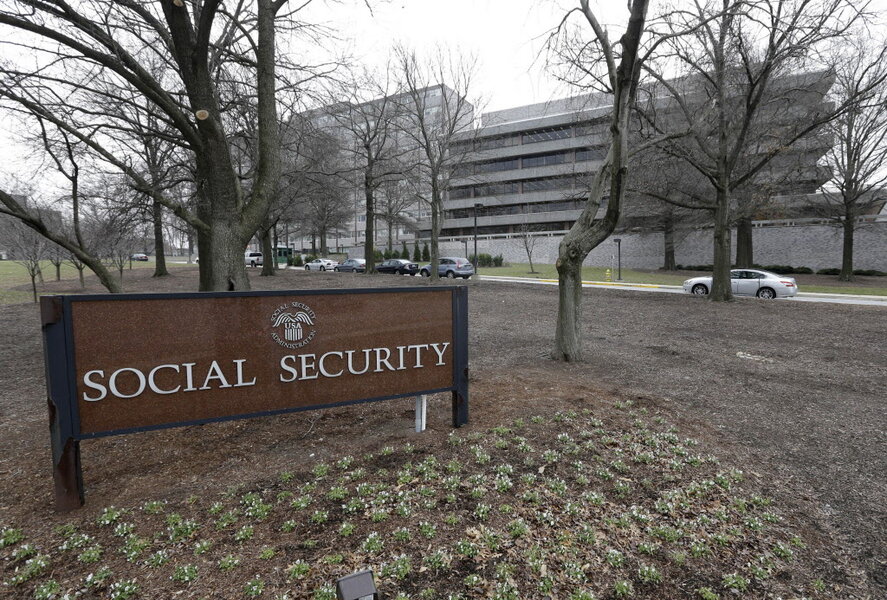Will tiny increase in Social Security benefits for 2017 make a difference?
Loading...
Social Security recipients including retirees, disabled workers, veterans, and their families can expect a 0.3 percent increase in their payments next year, said the federal government Tuesday.
For retired workers, the increase amounts to a $5 per month bump in pay for an average monthly stipend of $1,360 starting in January 2017, according to the Social Security Administration. Disabled workers will see $4 more in their benefits checks, or a total of $1,171 on average.
While the small increase for next year is welcome news for the upwards of 60 million of Americans who receive Social Security benefits, it will be the smallest bump (aside from years in which there was no increase) since the Social Security Administration (SSA) began tying annual increases to the rate of inflation in the mid 1970s, according to the American Institute for Economic Research (AIER).
Last year's rate didn't increase because of the flat inflation rate of that time, which resulted largely from low energy prices.
On average, the SSA has increased payments by 2.3 percent each year since 2000, calculates the institute. If that rate had applied in 2017, it would have added $28 a month to people's benefits checks at current average benefit levels.
Though inflation – or the rise in the cost of groceries, gas, and cars, among other factors – has been relatively low since the Great Recession (though its growing almost to normal levels), health-care costs are rising. Since August 2015, they’ve increased 5.1 percent, as the The Bureau of Labor Statistics reports. These trends could benefit some Social Security recipients, while burdening others, estimates AIER.
“To the extent that many Social Security beneficiaries spend more of their money on healthcare than the average American, this year’s COLA may not keep pace with actual living costs,” says Max Gulker, an AIER research fellow. “However, energy prices decreased 9.2 percent [in the time period that healthcare costs have risen], so beneficiaries who drive more than average may come out ahead.”
However, there's another development that could make it hard for some beneficiaries to come out ahead, despite low energy costs. Premiums for Medicare Part B, which covers doctor visits and lab tests, are expected to rise in 2017.
“For some beneficiaries, their Social Security increase may be partially or completely offset by increases in Medicare premiums,” the SSA points out in its Tuesday COLA announcement.
As Money reports:
Medicare beneficiaries who collect Social Security typically get their Medicare Part B premium deducted from their monthly Social Security check. According to federal law, Social Security payments generally must not decline from one year to the next. This “hold harmless” provision means the dollar increase to Medicare Part B premiums cannot exceed the dollar increase to most beneficiaries’ Social Security checks. (Last year, when there was no Social Security COLA, the Medicare Part B premium remained flat at $104.90 per month for beneficiaries held harmless.)
The fact that 2017's COLA increase was so small could mean "outsized premiums" for those not eligible for protection under the harmless rule, including new Social Security enrollees, those on Medicare who have not claimed their Social Security benefits yet, and higher-income seniors, according to Money.
These people make up an estimated 30 percent of beneficiaries who could see their Medicare premiums rise by as much as 22 percent, by some estimates. As AIER points out, however, the US Congress has blocked large increases in premiums in the past.
AARP, an advocacy organization representing seniors, responded to today's COLA announcement by criticizing the meager pay increase in an email statement.
“After last year’s zero COLA, this year’s announcement doesn’t offer much help to the millions of families who depend on their Social Security benefits,” CEO Jo Ann Jenkins said.
As the number of workers paying into the Social Security system declines while the number of recipients grows, AARP says it is concerned about the program’s future. In her statement, Dr. Jenkins implored the presidential candidates, who have offered scant details on their visions for the future of Social Security, to address the issue before the elections.
“In our final presidential debate of 2016, we urge the moderator to finally question the candidate on Social Security and get them to Take a Stand. Voters need to hear candidates’ positions on our largest and most important program before they cast their votes,” said Jenkins.








